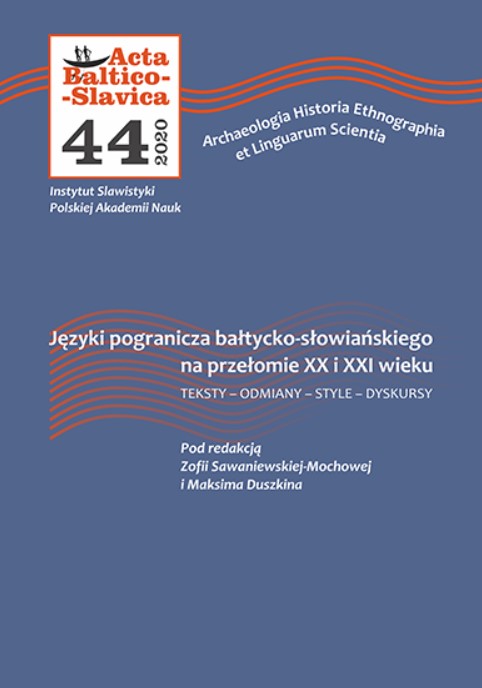Obraz Kresów Wschodnich w tekstach historii mówionej
The Image of Kresy Wschodnie in Texts of Oral History
Author(s): Damian GocółSubject(s): Cultural history, Military history, Oral history, Pre-WW I & WW I (1900 -1919), Interwar Period (1920 - 1939), WW II and following years (1940 - 1949), Politics of History/Memory, Politics and Identity
Published by: Instytut Slawistyki Polskiej Akademii Nauk
Keywords: Kresy Wschodnie; oral history; memory; oral accounts; narrative identity; subjectivity;
Summary/Abstract: The author assumes that KRESY (former Polish Eastern Borderlands) is a characteristic culturem of Polish culture. He considers culturems as concepts which are important for self-identification, and assumes that identity has a shape of a narrative. Consequently, he recognises that the culturem KRESY may have a significant impact on shaping the identity of people associated with the former lands of the Second Polish Republic, so-called Kresy Wschodnie. This article analyses three oral history texts from the author’s files. They reveal a strong connection between the image of KRESY and the Polish home (especially the manor house) and the roots of Kresowiak identity in national liberation traditions (especially the January Uprising). This image is characterised by a certain degree of idealisation: KRESY are viewed as a place of peaceful coexistence of numerous nations and cultures. The image of KRESY has changed over time. After the Polish-Bolshevik war, it was a place of lawlessness; after the creation of the Border Protection Corps (Korpus Ochrony Pogranicza, KOP) it was a place of peace. The Second World War was a turning point marking the end of Polish Kresy.
Journal: Acta Baltico Slavica
- Issue Year: 2020
- Issue No: 44
- Page Range: 85-103
- Page Count: 19
- Language: Polish

